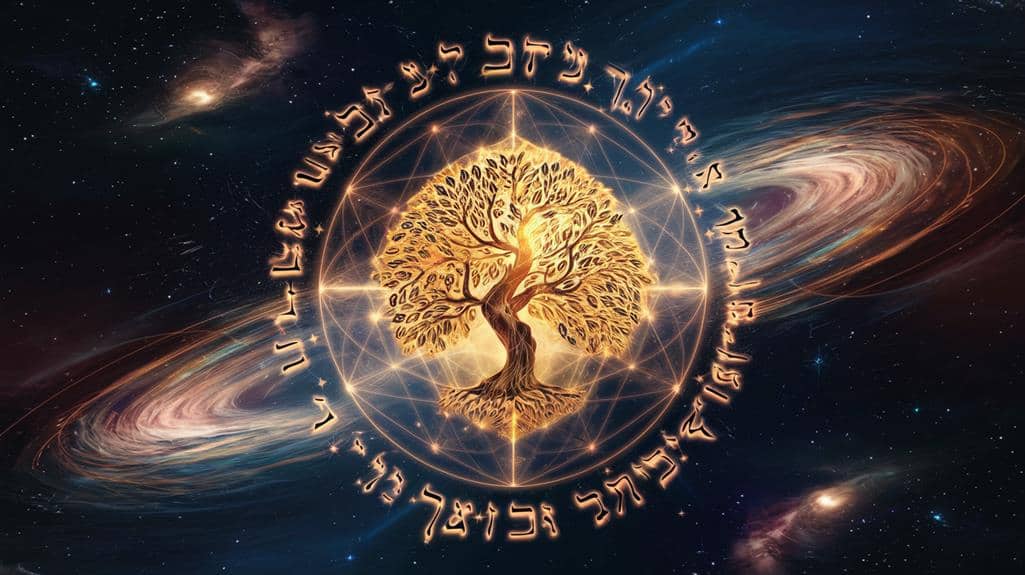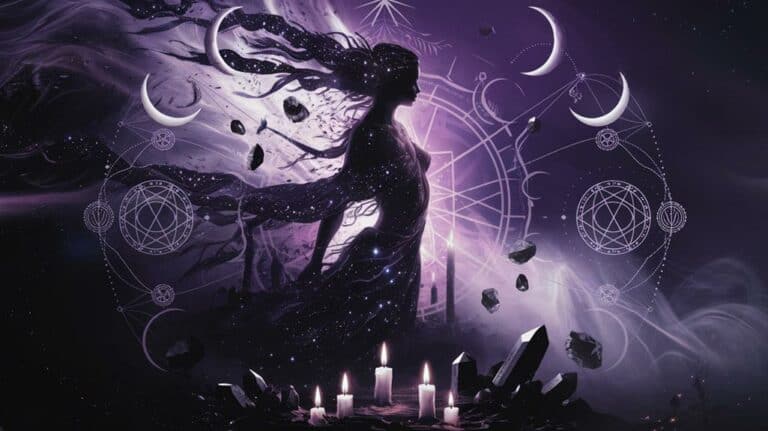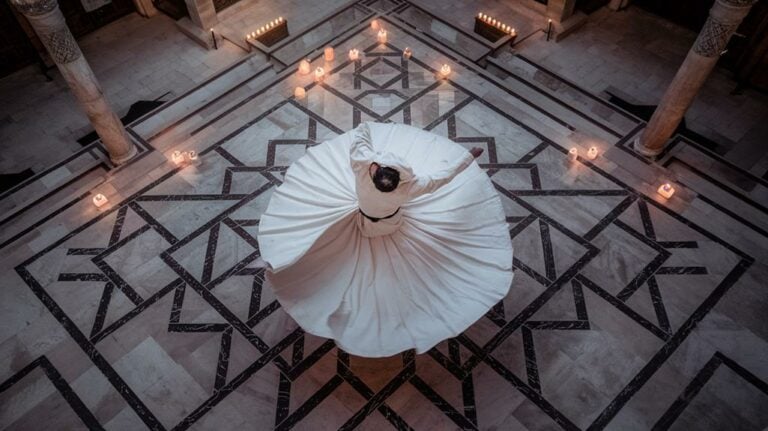What Is Jewish Mysticism?
You’ve likely encountered references to Jewish mysticism in popular culture, but its true nature runs far deeper than common portrayals suggest. At its core, it’s an ancient spiritual tradition that explores the mysteries of God, creation, and human consciousness through various practices and teachings. While you might be familiar with terms like Kabbalah or Hasidism, these represent only fragments of a vast spiritual landscape that has shaped Jewish thought for millennia. From hidden meanings in sacred texts to meditation techniques passed down through generations, Jewish mysticism offers profound insights into the nature of existence and your place within it.
Origins and Historical Development
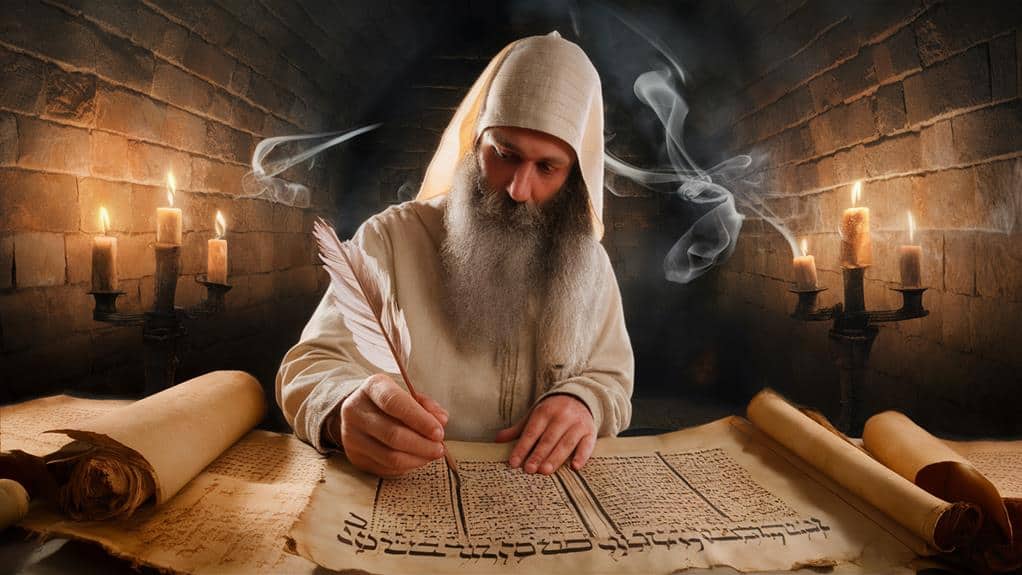
Jewish mysticism’s roots trace back to ancient Hebrew traditions and biblical texts, particularly the prophetic visions and divine encounters described in the Torah.
You’ll find its earliest expressions in the merkavah (divine throne) traditions of the Second Temple period, where seekers set out on spiritual journeys to glimpse divine domains.
As you explore deeper, you’ll discover how these practices evolved through centuries of exile and persecution, giving rise to new forms of mystical expression.
By the Middle Ages, you’re witnessing the emergence of Kabbalah, which you can think of as a profound system that explores the nature of God and creation through symbolic interpretation.
You’ll see how the traumatic expulsion of Jews from Spain in 1492 transformed Jewish mysticism, leading to the development of Lurianic Kabbalah in Safed.
This new framework helped you understand suffering and exile through mystical concepts of divine contraction and cosmic repair.
Today, you’re part of a tradition that’s continuously evolving, as each generation reinterprets these ancient mysteries through contemporary lenses, finding new relevance in age-old wisdom that speaks to your soul’s deepest yearnings.
Key Mystical Traditions
The rich tapestry of mystical traditions within Judaism encompasses several major streams that have shaped spiritual practice throughout history.
You’ll find the profound contemplative practices of Merkavah mysticism, where ancient practitioners sought visions of God’s divine throne through intensive meditation and prayer. This early tradition laid the groundwork for what you’d later recognize as Kabbalah, Judaism’s most influential mystical movement.
When you explore Kabbalah, you’ll discover its central text, the Zohar, which reveals the hidden dimensions of Torah and existence itself. You’re invited to contemplate the ten sefirot, divine emanations through which God’s infinite light flows into creation.
Another tradition you’ll encounter is Hasidism, which emerged in 18th-century Eastern Europe, making mystical teachings accessible to ordinary Jews through joyous worship and contemplative prayer.
You might also find yourself drawn to the meditative practices of Jewish Meditation, where you’ll learn to quiet your mind through Hebrew letter visualization and sacred phrase repetition.
Each of these traditions offers you unique pathways to transcendent experience and divine connection, while remaining rooted in Jewish law and tradition.
Sacred Texts and Teachings
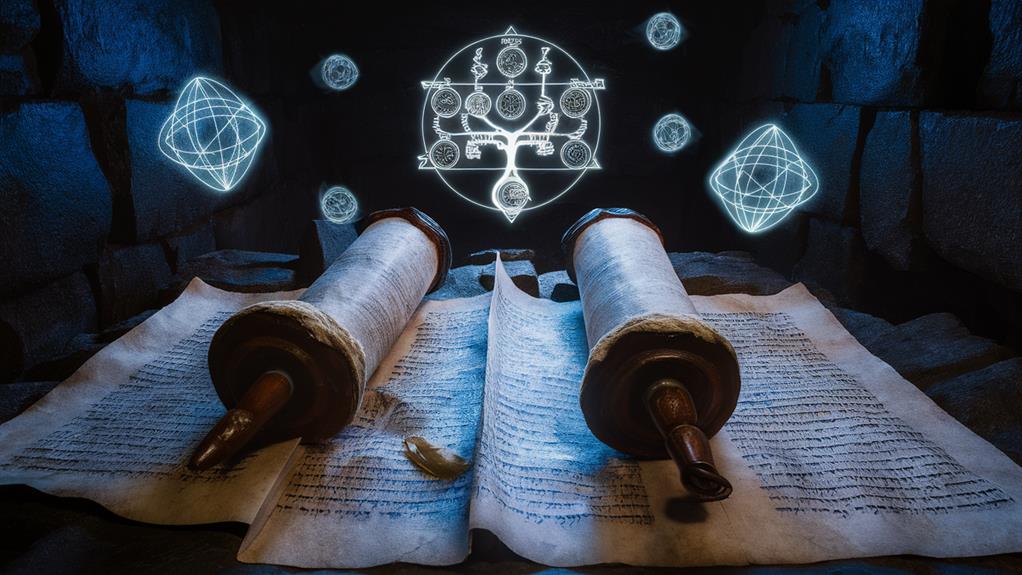
Numerous sacred texts form the foundation of Jewish mystical thought, with ancient manuscripts revealing esoteric wisdom passed down through generations.
At the heart of this tradition, you’ll find the Zohar, a masterful commentary on the Torah that discloses the hidden dimensions of existence and your relationship with the Divine. Through its luminous passages, you’re invited to explore the sephirot – the divine attributes through which creation flows – and contemplate your role in the cosmic dance of existence.
Beyond the Zohar, you’ll discover the Sefer Yetzirah, which teaches how the 22 letters of the Hebrew alphabet serve as building blocks of creation, enabling you to understand the subtle energies that shape reality.
The teachings of the Baal Shem Tov and his disciples in the Hasidic tradition offer practical wisdom for finding the sacred in everyday life, while the works of Abraham Abulafia present meditation techniques that can transform your consciousness.
These texts don’t just convey information – they’re gates through which you can access deeper dimensions of understanding and spiritual growth.
Meditation and Prayer Practices
Mystics in the Jewish tradition have developed rich contemplative practices that merge meditation with traditional prayer, creating pathways to heightened spiritual awareness. You’ll find these practices woven into daily rituals, where sacred Hebrew letters and divine names become focal points for deep concentration and spiritual ascent.
Through the practice of hitbodedut, you’re encouraged to engage in intimate, personal dialogue with the Divine, often in solitary settings where you can freely express your innermost thoughts.
When you explore Jewish meditative practices, you’ll encounter techniques like visualization of the Hebrew letters, rhythmic breathing synchronized with sacred phrases, and contemplation of the sefirot – the divine attributes through which creation flows.
You’ll learn to use traditional prayers as launching points for deeper states of consciousness, where each word becomes a gateway to mystical insight. The practice of kavvanah teaches you to direct your heart’s intention with laser-like focus, transforming routine prayers into powerful tools for spiritual transformation.
These ancient techniques offer you a bridge between the physical and spiritual domains, allowing you to access higher states of consciousness while remaining grounded in traditional Jewish practice.
The Four Spiritual Worlds
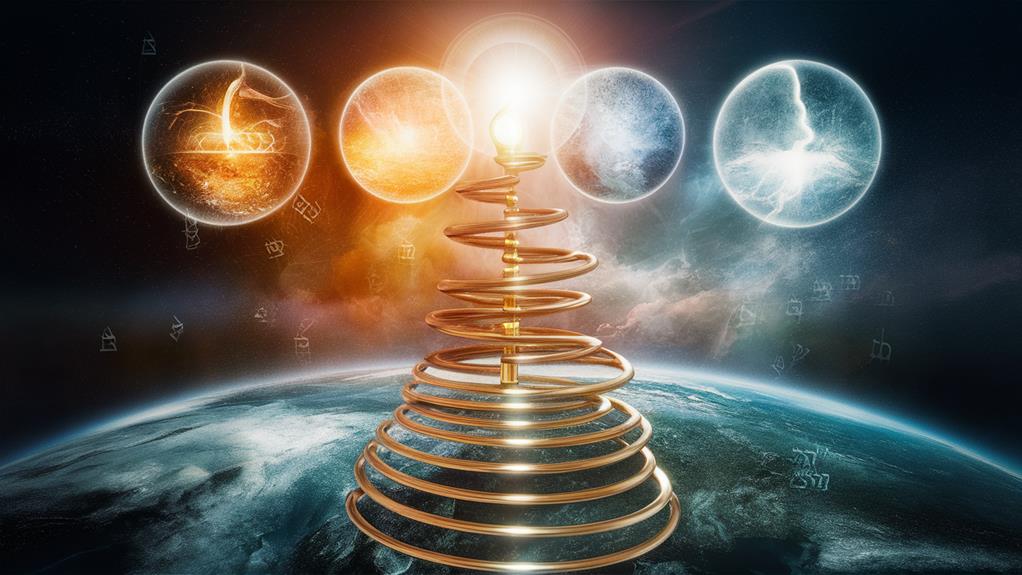
According to Kabbalistic teachings, reality breaks down into four distinct spiritual worlds that cascade from the highest divine domain to our physical existence.
At the pinnacle, you’ll find Atzilut, the sphere of pure divine emanation where you can glimpse the raw essence of God’s creative force. Below this lies Beriah, the world of creation, where you’ll encounter the throne of glory and the highest orders of angels that shape divine will into archetypal forms.
As you descend further, you’ll discover Yetzirah, the formative world where angels and spiritual forces mold these divine patterns into more definite shapes. Here, you’ll witness the transformation of pure spiritual energy into distinct forms that will eventually manifest in our world.
Symbols and Divine Names
Sacred symbols and divine names form the cornerstone of Jewish mystical practice, serving as keys that access spiritual gateways between the physical and higher dimensions.
You’ll discover that each Hebrew letter contains multitudes of meaning, with divine names like the Tetragrammaton (YHVH) holding immense power in mystical meditation and prayer. These sacred symbols aren’t mere representations – they’re living bridges to divine consciousness.
When you work with these mystical tools, you’ll encounter the 72 names of God, each combination of Hebrew letters acting as a unique frequency that resonates with different aspects of divine energy.
The Tree of Life symbol, with its ten sefirot connected by twenty-two paths, becomes your map through the cosmic landscape of creation. As you explore deeper, you’ll find that even the crown-like tagin adorning certain Hebrew letters serve as antennas for celestial frequencies.
In your spiritual journey, these symbols and names become more than abstract concepts – they’re keys to revealing the gates of wisdom, allowing you to traverse the subtle dimensions between human consciousness and divine reality.
Masters Through The Ages
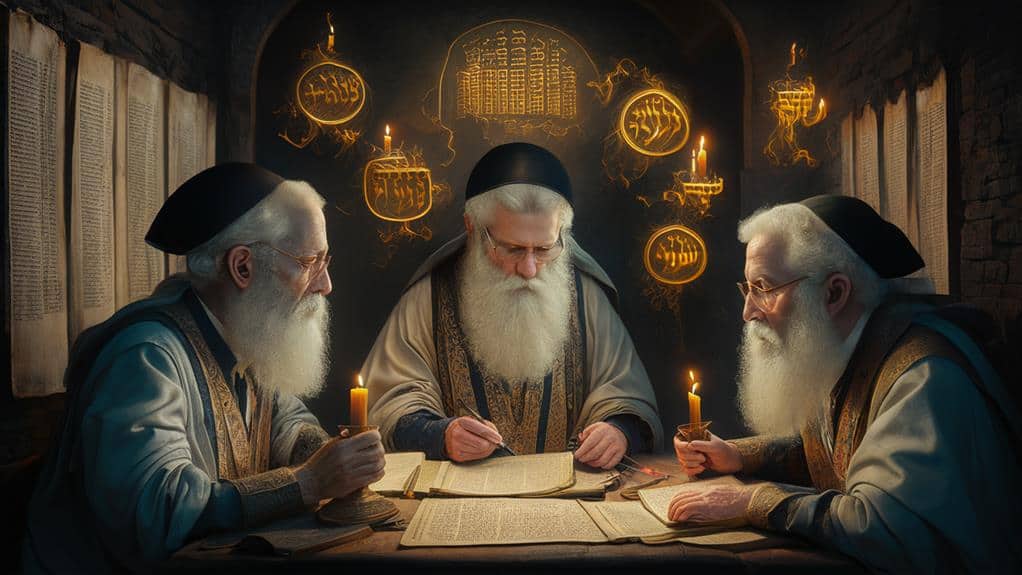
The rich tapestry of Jewish mystical knowledge has been woven through generations by enlightened teachers who mastered these divine symbols and names.
You’ll discover an unbroken chain of wisdom carriers, from the prophets of ancient Israel to the Talmudic sages who carefully preserved and transmitted these sacred teachings.
As you explore this lineage, you’ll encounter luminaries like Rabbi Shimon bar Yochai, who revealed the foundational Zohar text, and the 16th-century master Rabbi Isaac Luria, whose cosmic teachings revolutionized Kabbalistic thought.
These masters didn’t just study texts; they lived the mystical path, experiencing direct divine communion and sharing their insights with worthy students.
In more recent centuries, you’ll find the transformative influence of the Baal Shem Tov, founder of Hasidism, who democratized mystical practice and taught that every person could access divine consciousness through joy and devotion.
Through their teachings, you’ll discover how each generation has added its unique perspective while maintaining the essence of these timeless truths, creating a living bridge between ancient wisdom and contemporary spiritual seeking.
Modern Applications of Mysticism
Contemporary seekers have breathed new life into Jewish mystical practices, adapting ancient wisdom for modern challenges. You’ll find these timeless teachings appearing in mindfulness meditation groups, environmental movements, and even corporate wellness programs.
The mysteries of Kabbalah have found their way into therapeutic settings, where you’re encouraged to explore your inner dimensions through traditional Jewish contemplative practices.
You’re witnessing a remarkable fusion as ancient mystical concepts merge with contemporary psychology and social justice initiatives. In meditation centers across the globe, you’ll encounter Jewish mystical breathing techniques alongside discussions of tikkun olam – the repair of the world.
Digital platforms now offer you access to previously guarded wisdom, while modern teachers interpret esoteric texts through the lens of current social issues.
When you explore today’s applications of Jewish mysticism, you’ll discover how the sacred geometries of the Tree of Life inform sacred art therapy, and how gematria’s numerical mysteries enhance modern problem-solving approaches.
These adaptations aren’t diluting tradition – they’re extending its reach, allowing you to access spiritual depths while maneuvering through modern life’s complexities.
Myths and Misconceptions
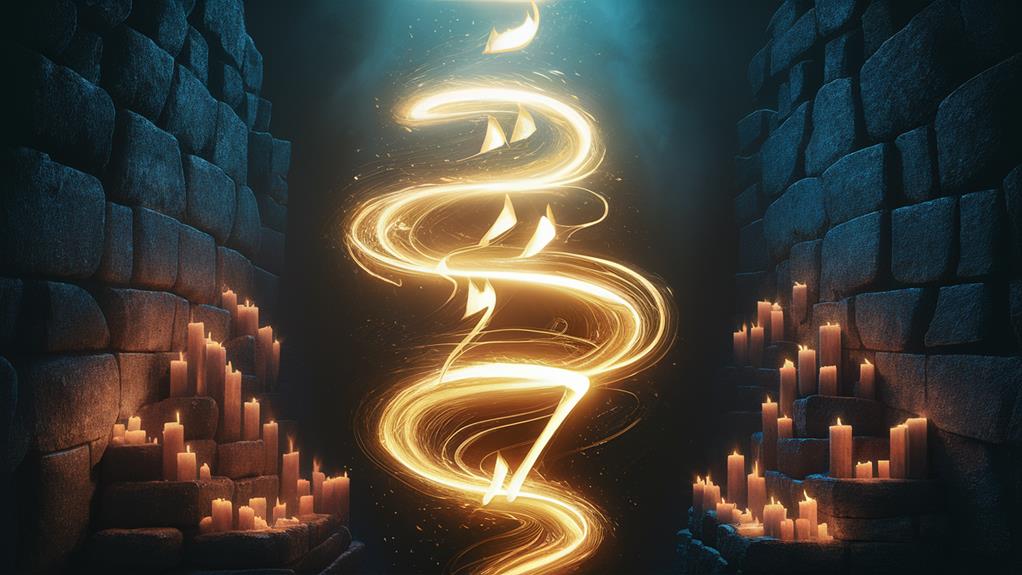
Popular misconceptions about Jewish mysticism often stem from sensationalized media portrayals and commercialized versions of Kabbalah.
You’ll find that many people mistakenly view it as a shortcut to supernatural powers or a form of fortune-telling, when in reality, it’s a profound spiritual discipline requiring years of dedicated study and ethical development.
Another misconception you might encounter is that Jewish mysticism is entirely separate from mainstream Judaism.
In truth, mystical traditions are deeply interwoven with Jewish thought and practice, forming an integral part of the tradition’s spiritual fabric.
You’ll discover that authentic Jewish mysticism isn’t about quick fixes or magical solutions, but rather about developing a deeper understanding of your relationship with the Divine and your place in the cosmic order.
Don’t be misled by claims that Kabbalah can be studied without a foundation in basic Jewish teachings.
The mysteries of Jewish mysticism weren’t meant to be approached lightly – they require maturity, preparation, and a solid grounding in Torah study.
What you’re seeking isn’t surface-level spirituality, but a genuine path to wisdom that demands commitment and reverence.
Conclusion
As you’ve explored Jewish mysticism‘s profound depths, you’ll find that it’s more than an ancient spiritual tradition—it’s a living pathway to divine connection. Through its intricate teachings, sacred texts, and contemplative practices, you’re invited to discover the hidden dimensions of existence. Whether you’re drawn to Kabbalah’s wisdom, Hasidic devotion, or meditative practices, Jewish mysticism offers you transformative tools for experiencing the Divine in today’s world.



